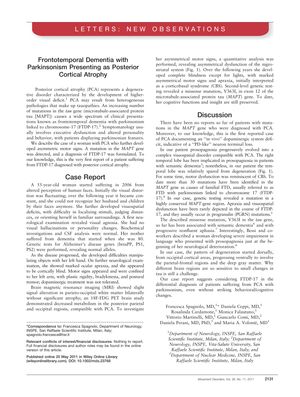Clinical Features of Familial Lewy Body Parkinsonism Caused by α-Synuclein Triplication (Iowa Kindred) with Video Documentation
June 2011
in “
Movement Disorders
”

TLDR The document describes a woman with familial Parkinson's disease due to a genetic mutation, showing severe symptoms and poor response to treatment, and suggests finasteride may help reduce symptoms in Tourette syndrome.
The document from 2011 presents a case report of a 55-year-old woman with familial Lewy body parkinsonism due to α-synuclein triplication, detailing the progression of her disease including visuospatial deficits and motor signs unresponsive to treatment, leading to a diagnosis of frontotemporal dementia with parkinsonism. It also includes video documentation and clinical features of four cases from the Iowa kindred, showing symptoms like tremors, cognitive decline, and motor difficulties, with varying responses to medication and severe end-stage impairments. Additionally, the document discusses a study involving 2,000 Parkinson's disease patients, which found that the penetrance of the LRRK2 G2019S mutation is 12% at age 60, 23% at age 70, and 33% at age 80, important for genetic counseling. Lastly, it reports on a study with 10 Tourette syndrome patients, showing that finasteride treatment significantly reduced tic severity and obsessive-compulsive symptoms, suggesting its therapeutic potential and the role of androgens in the disorder.




